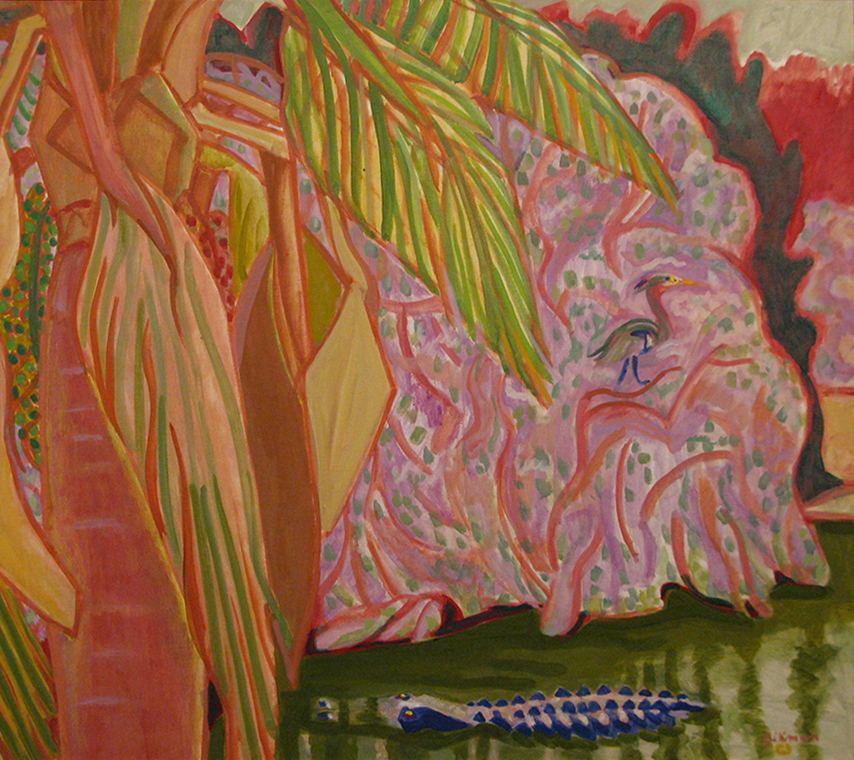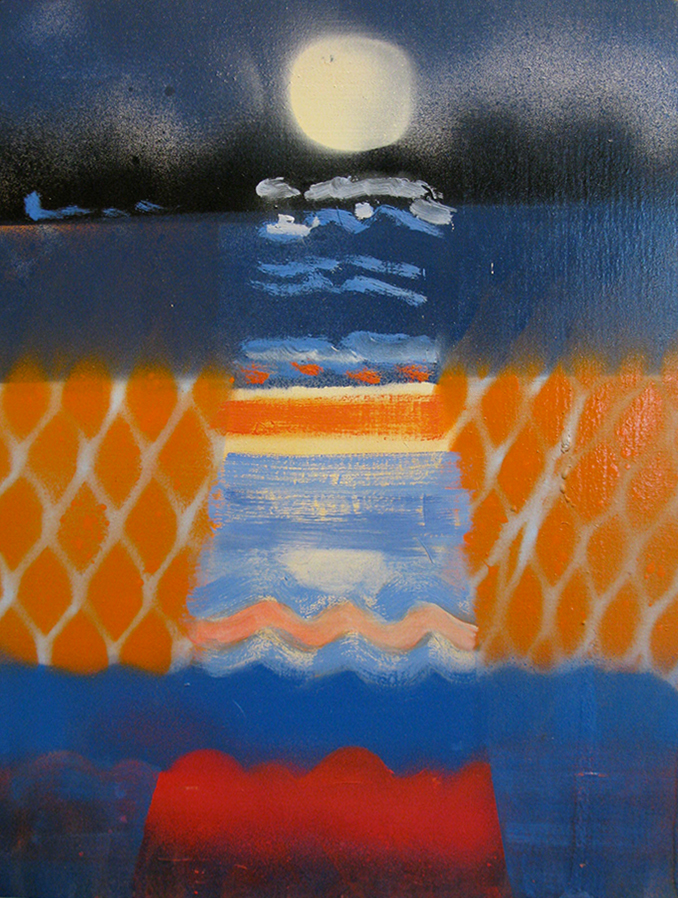A Breath of Summer Air by Britta Konau ART CURRENT Dec. 2014










| art current: A Breath of Summer Air at the Caldbeck Gallery |
| by Britta Konau |
| I know, winter has only just begun, but I could already use more warmth, color and light. If you feel the same way – and if you enjoy good painting – I recommend stopping by Rockland’s Caldbeck Gallery. |
| Their current show assembles recent and older works by Cicely Aikman, Elizabeth Awalt, Lois Dodd, Jeff Epstein, Nancy Glassman, Fred Kellogg, Kayla Mohammadi, and Nancy Wissemann-Widrig. All paintings are landscapes of some kind but range widely in the handling of brush and paint. As such, the show offers a very enjoyable, refreshing and informative overview of different approaches, emphasizing continuities of interest between artists working from observation and from imagination. |
| Glassman’s works are closest to direct observation and most are titled with the botanical names of the flora depicted. Small oils on aluminum of berries, cherries and blossoms appear timeless, were it not for their fresh, close cropping. The 1950s palette of “Glauca Rose Hips,” compositionally the simplest of the group, is enlivened by twigs that meander calligraphically against the pastel green background and is beautifully complemented by shiny red hips. The underlying metal supplies intriguing glints of light in Glassman’s gem-like flower paintings. Their brushwork is vivid, confidently building up exquisite nuances of color, texture and material. On the other hand, the larger oil on panel “Amaranth” is more a vibrant, energetic field in which fore- and background are enmeshed, the central plant almost engulfed by teeming vegetation. Dodd, coming from a completely opposite direction, creates a quietly gorgeous “Coneflowers and Bee”: just three flowers balanced dynamically across a richly varied green background, their orange and pink blossoms popping. |
| While Dodd and Glassman here present nature up close, Kellogg takes a longer view with two island vistas. Summer heat and humidity have blurred edges and partially washed-out color. These solid works are most remarkable, however, for their complex ordering of space into the distance. Whereas Kellogg’s subjects are traditional Maine fare, Epstein has a superb eye for beauty in unexpected places. “Ruts” is an impressive strong vertical in which visual interest is horizontally stacked up and into depth like a scroll painting. From the ruts in the immediate foreground our eyes wander over wintery roads and fences to a farmhouse, barn, and trees farther afield. A master of his means, Epstein conjures this sliver of a rural winter scene with paint liquid, impastoed, and scratched into. In contrast to Epstein’s taut composition, Wissemann-Widrig’s paintings are broad water views, open and spacious. In the appropriately titled “Sea Calm,” light impressionistically reflects off slight waves, with the water’s transparency beautifully captured in the foreground. Wissemann-Widrig, too, is a virtuoso of the brush, using whatever movement necessary to create the desired atmospheric and descriptive effect, from straight strokes and forceful daubs to thin swirls and curling eddies. |
| Awalt expands on this gestural approach, applying paint loosely, pouring it, letting go of control to a large degree. In the large “Vernal Pool” this results in a luscious layering of lights, colors andforms to evoke a wild, spring fecundity. This pool is quiveringly alive, shimmering with liquid veilsof color. The two paintings by Aikman (1923-2013) are also riotous, but they are more Matissean,flat, decorative, with colors bound by lines into interlocking shapes. Aikman clearly enjoyedcoloring outside the lines, however, and stripes, dots and solid areas engage with unaffectedsymbols of flowers and more detailed renderings of animals to suggest all-encompassingsymphonies of life. |
| Mohammadi takes even more artistic liberties with the so-called real world than Aikman’s stylizations. Her moonscape envisions the elemental forms of the scene – circle, horizon, triangularreflection – in a texturally and colorfully complex configuration that recalls stenciled street art.Mohammadi’s pièce de résistance, however, is an 8 x 6-foot untitled painting, which I read as arejoinder to landscape painting. Against a quintessential rendering of a sea- or landscape (reddishhorizontal stripes topped by blue ones), a boat is stacked with colorful geometric shapes.Recognizable as Mohammadi’s personal artistic vocabulary, these modernist forms glow from within, everything else being rather drab. In confident, passionate and wonderfully imaginativeterms, the artist’s choices are thus placed within the context of a tradition especially strong in Maine – rescued from sinking in a sea of unremarkableness. |
| All artists are represented by very strong work that has been chosen in a meaningful way. Althoughcoming from opposite ends of the spectrum, from representation to abstraction, from completecontrol over brush and image to relative freedom, the paintings beautifully coexist and enhanceeach other. Ultimately, the show illuminates what we’ve known all along – that representation andabstraction aren’t so different after all, just a matter of degree. |
| The current installation is on view through January 30, 2015, Thursdays and Fridays, noon to 4 p.m. and by chance and appointment at Caldbeck Gallery, 12 Elm Street, Rockland, 594-5935,caldbeck.com. |
| art current is a biweekly column written by Britta Konau. She can be reached atbkonau@gmail.com. |